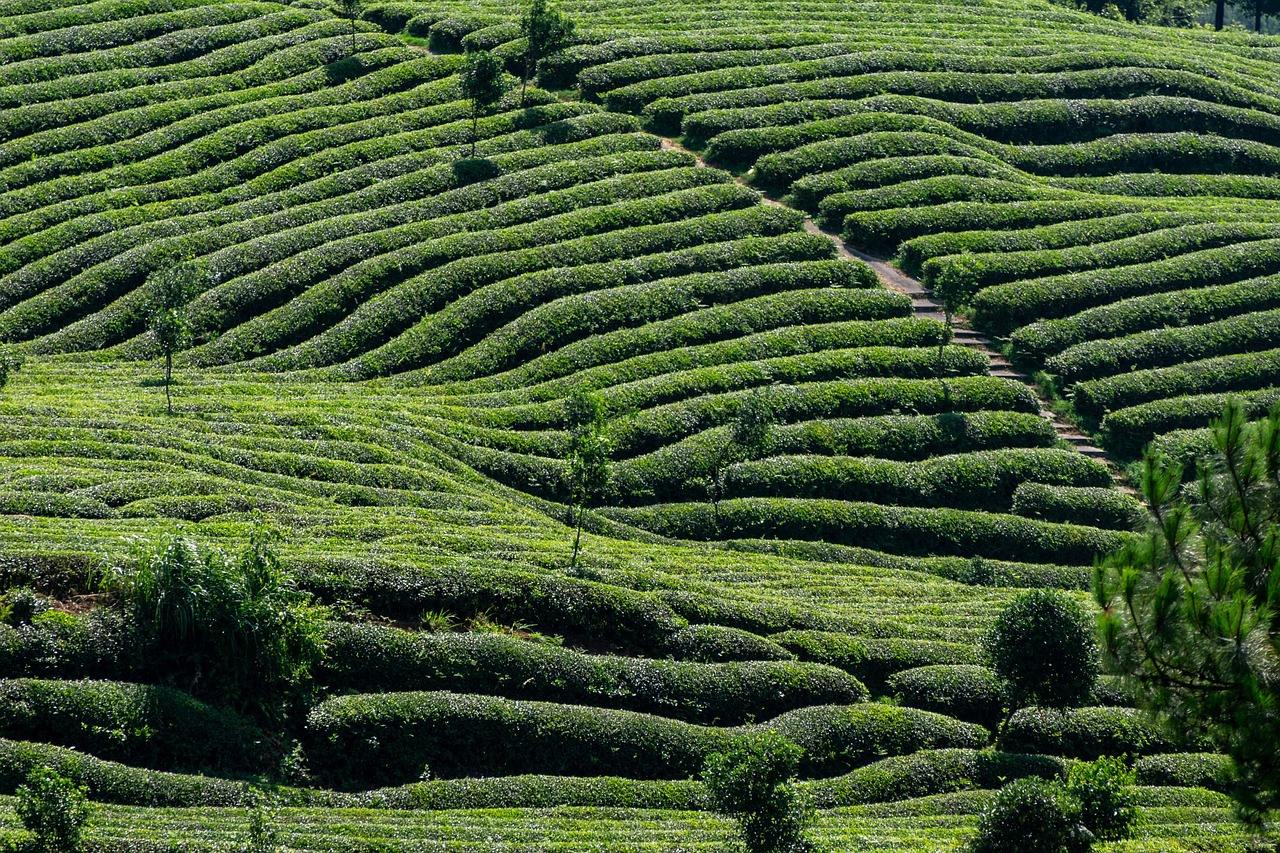New Zealand tea tree, known scientifically as Leptospermum scoparium, has a moderate growth rate, typically reaching maturity in 5 to 10 years. Its leaves and oil are highly valued for various medicinal applications, including antiseptic properties and skin care benefits.
Introduction to New Zealand Tea Tree
New Zealand tea tree is an evergreen shrub native to New Zealand and parts of Australia. Often referred to as manuka, it belongs to the Myrtaceae family. This plant is recognized for its distinctive aromatic leaves and beautiful white or pink flowers. It thrives in well-drained soils and is often found in coastal environments, where it can grow both in wild settings and cultivated gardens.

The leaves of the New Zealand tea tree contain essential oils that are rich in beneficial compounds. These compounds have garnered significant attention for their medicinal properties. Due to its effectiveness in treating various ailments, manuka has been used by the Maori people for centuries. Today, it is widely recognized in modern herbal medicine and natural therapies.
Growth Rate of New Zealand Tea Tree
The growth rate of New Zealand tea tree can vary depending on environmental factors and cultivation methods. Generally, it grows at a moderate pace. Under ideal conditions, it can reach a height of 4 to 5 meters (approximately 13 to 16 feet) within a decade.
Several factors influence the growth rate of New Zealand tea tree:

- Soil Quality: Well-drained, fertile soil promotes healthy growth.
- Climate: A temperate climate with adequate rainfall is optimal for growth.
- Sunlight: Full sun exposure enhances photosynthesis and overall health.
- Watering: Consistent watering without waterlogging is crucial.
Young plants may take longer to establish their root systems. However, once established, their growth accelerates significantly. Regular pruning can also help maintain their shape and encourage bushier growth.
Medicinal Applications of New Zealand Tea Tree
The medicinal applications of New Zealand tea tree are vast. The essential oil extracted from its leaves is known for its potent antibacterial, antifungal, and anti-inflammatory properties. Here are some key medicinal uses:
- Antiseptic: The oil is effective in treating minor cuts, burns, and abrasions. It helps prevent infections by inhibiting bacterial growth.
- Skin Care: Manuka oil is beneficial for various skin conditions, including acne and eczema. It promotes healing and reduces inflammation.
- Respiratory Health: Inhalation of manuka oil can assist in relieving symptoms of respiratory issues such as asthma or bronchitis.
- Oral Health: The oil can be used in mouthwash formulations to fight bacteria that cause bad breath and gum disease.
The demand for manuka products has surged over recent years, leading to extensive research on its health benefits. Many health-conscious consumers seek out manuka honey, which is produced from the nectar of the tea tree flowers. This honey is renowned for its unique antibacterial properties and is often used as a natural remedy.

Nutritional Components of New Zealand Tea Tree
The essential oil derived from New Zealand tea tree contains various chemical components that contribute to its medicinal efficacy. The following table outlines some of these key components:
| Chemical Component | Properties |
|---|---|
| Beta-Triketones | Antibacterial and anti-inflammatory |
| Cineole | Antiseptic and expectorant |
| Linalool | Calming and soothing effects |
| Terpinen-4-ol | Strong antimicrobial activity |
This diverse range of components underscores the potential health benefits associated with New Zealand tea tree products. As research continues, more applications may be discovered, further enhancing its status in herbal medicine.
Cultivation of New Zealand Tea Tree
Cultivating New Zealand tea tree requires specific conditions to ensure optimal growth and health. Understanding the cultivation process is essential for both amateur gardeners and commercial growers. This section explores the best practices for planting, maintaining, and harvesting manuka.
Soil Preparation
Preparing the soil is the first step in cultivating New Zealand tea tree. It is important to create an environment that mimics its natural habitat. Here are some key considerations:

- Drainage: Manuka thrives in well-drained soils. Sandy or loamy soils are ideal.
- pH Level: The soil pH should be slightly acidic to neutral, around 6.0 to 7.0.
- Organic Matter: Incorporating organic compost can improve soil fertility and structure.
Planting Techniques
When planting New Zealand tea tree, timing and technique play crucial roles in establishing healthy plants.
- Timing: The best time to plant is in spring or early autumn when temperatures are mild.
- Spacing: Allow sufficient space between plants, ideally 1 to 2 meters apart, to promote air circulation and reduce disease risk.
- Depth: Plant seeds or seedlings at a depth of approximately 30 centimeters (12 inches).
Watering and Fertilization
Proper watering and fertilization are vital for the growth of New Zealand tea tree. Here are some guidelines:
- Watering: Water young plants regularly until established. Once mature, they require less frequent watering due to their drought tolerance.
- Fertilization: Use a balanced fertilizer during the growing season. Avoid over-fertilizing, as this can lead to excessive leaf growth at the expense of flowers.
Pest and Disease Management
Like any other plant, New Zealand tea tree is susceptible to certain pests and diseases. Effective management strategies can prevent significant damage.
Pests
Common pests that affect New Zealand tea tree include:
- Aphids: These small insects can weaken plants by sucking sap. Regular inspections and introducing natural predators like ladybugs can help control their population.
- Leaf Miners: These pests burrow into leaves, causing visible damage. Removing affected leaves can mitigate their impact.
Diseases
Diseases can also pose a threat to manuka plants. Here are some common issues:
- Root Rot: Caused by overwatering or poor drainage, root rot can be detrimental. Ensuring proper drainage will help prevent this condition.
- Fungal Infections: Signs include discoloration or wilting of leaves. Applying appropriate fungicides or using organic treatments can effectively manage these infections.
Harvesting New Zealand Tea Tree
The harvesting process is crucial for obtaining high-quality essential oils and honey products. Timing and techniques greatly impact yield and potency.
Harvesting Leaves for Essential Oil
The best time to harvest leaves for essential oil extraction is during peak growing seasons when the oil concentration is highest. Follow these tips for effective harvesting:
- Technique: Use sharp shears to cut branches without damaging the plant.
- Timing: Harvest early in the morning when the oil content is maximized due to cooler temperatures.
Harvesting Manuka Honey
If cultivating for honey production, bees will typically collect nectar from manuka flowers in late spring to early summer. Here are steps for successful honey harvesting:
- Bee Management: Ensure strong bee colonies to maximize nectar collection.
- Tasting Quality: Monitor the honey’s flavor and color before harvesting, as these indicate quality.
Understanding these cultivation practices will help ensure successful growth and optimal yields of New Zealand tea tree products, further emphasizing its value in natural remedies and health products.
Health Benefits of New Zealand Tea Tree Oil
New Zealand tea tree oil is renowned for its various health benefits, making it a popular choice in both traditional and modern medicine. This section delves into the specific uses of tea tree oil, highlighting its therapeutic properties and applications.
Skin Health
Tea tree oil is widely celebrated for its skin health benefits. Its natural antimicrobial properties make it effective in treating a variety of skin conditions. Common applications include:
- Acne Treatment: The oil helps reduce acne-causing bacteria and can decrease inflammation associated with breakouts.
- Eczema Relief: Its anti-inflammatory properties can soothe irritated skin and provide relief from eczema symptoms.
- Fungal Infections: Tea tree oil is effective against fungal infections such as athlete’s foot and nail fungus, promoting healing of the affected areas.
Wound Healing
Tea tree oil is frequently used to promote wound healing. Its antiseptic qualities help prevent infection in minor cuts and abrasions. Here are ways it aids in wound care:
- Inhibition of Bacterial Growth: The oil prevents the growth of harmful bacteria, lowering the risk of infections.
- Reduced Inflammation: Applying tea tree oil can minimize redness and swelling around wounds.
- Pain Relief: It may offer a soothing effect that helps alleviate discomfort associated with injuries.
Hair Care
Tea tree oil is also beneficial for hair health. It can improve scalp conditions and enhance overall hair quality. Some of its uses include:
- Dandruff Treatment: The antifungal properties help combat dandruff by addressing the underlying causes.
- Scalp Health: Regular use can promote a healthy scalp, reducing itchiness and flakiness.
- Hair Growth: Some studies suggest that tea tree oil may stimulate hair growth by improving blood circulation to the scalp.
Using New Zealand Tea Tree Oil Safely
While tea tree oil offers numerous benefits, it is essential to use it correctly to avoid adverse effects. Here are some safety tips for using tea tree oil:
Dilution Guidelines
Tea tree oil is potent and should always be diluted before topical application. Here are general dilution guidelines:
- For Skin Applications: Mix 1-2 drops of tea tree oil with a carrier oil, such as coconut or almond oil, before applying to the skin.
- For Hair Care: Combine a few drops of tea tree oil with shampoo or conditioner to improve scalp health.
Patch Testing
Before using tea tree oil extensively, conduct a patch test to assess any allergic reactions. Follow these steps:
- Select a Small Area: Apply a diluted drop of tea tree oil to a small area of skin, such as the inner forearm.
- Monitor: Wait 24 hours to see if any irritation or allergic reaction occurs.
Precautions
A few precautions should be observed when using tea tree oil:
- Avoid Ingestion: Tea tree oil is not safe for oral consumption and should only be used topically or in diffusers.
- Keep Away from Eyes: Avoid contact with the eyes, as it can cause irritation.
- Consult Healthcare Professionals: Pregnant or breastfeeding women should consult their healthcare provider before using tea tree oil.
The Future of New Zealand Tea Tree Research
The growing interest in natural remedies has spurred additional research into the health benefits and applications of New Zealand tea tree. Researchers are investigating various aspects, including:
- Antimicrobial Efficacy: Studies continue to explore the effectiveness of tea tree oil against antibiotic-resistant bacteria.
- Cosmetic Applications: The potential for incorporating tea tree oil into skincare products is being examined for enhanced efficacy.
- Aromatherapy Benefits: Research is ongoing regarding the psychological effects of tea tree oil in aromatherapy practices.
This exploration into New Zealand tea tree’s medicinal applications and safety considerations underscores its growing importance in holistic health practices. As research unfolds, new avenues for its use may emerge, further establishing its role in natural medicine.
Potential Environmental Impact of New Zealand Tea Tree Cultivation
The cultivation of New Zealand tea tree not only benefits health but also has various environmental implications. Understanding these impacts is essential for sustainable farming practices. Here are some important points to consider:
Soil Improvement
Growing New Zealand tea tree can enhance soil health. The deep root system of the plant helps prevent soil erosion and improves soil structure. Additionally, manuka trees contribute organic matter to the soil through fallen leaves, which promotes nutrient cycling.
Biodiversity Support
New Zealand tea tree serves as a habitat for various species, thereby supporting biodiversity. The flowers attract bees and other pollinators, which are crucial for ecosystem health. By cultivating manuka, farmers can promote ecological balance and contribute to the preservation of local wildlife.
Carbon Sequestration
Planting New Zealand tea tree contributes to carbon sequestration. Trees absorb carbon dioxide during photosynthesis, helping to mitigate the effects of climate change. As awareness of environmental sustainability grows, the role of tea tree cultivation in carbon offsetting becomes increasingly significant.
Commercial Opportunities and Market Trends
The rising popularity of New Zealand tea tree products presents numerous commercial opportunities. The global demand for natural and organic products continues to grow, leading to an increase in market trends associated with manuka products.
Tea Tree Oil Market
The tea tree oil market has seen substantial growth due to its diverse applications in cosmetics, personal care, and therapeutic products. Key trends include:
- Natural Ingredients: Consumers are increasingly seeking products containing natural ingredients. This trend supports the demand for tea tree oil in skincare and haircare formulations.
- Online Sales Growth: E-commerce platforms are becoming significant channels for distributing tea tree oil and related products, making them more accessible to consumers worldwide.
- Health and Wellness Focus: A growing emphasis on health and wellness contributes to the popularity of natural remedies, including tea tree oil, as part of holistic health practices.
Manuka Honey Market
The manuka honey market has also expanded, driven by its unique properties and health benefits. Key factors influencing this market include:
- Unique Selling Proposition: Manuka honey is recognized for its antibacterial properties, particularly due to its high methylglyoxal (MGO) content. This uniqueness sets it apart from other honey varieties.
- Health Claims: Increasing consumer awareness of the health benefits associated with manuka honey has led to a surge in demand in dietary supplements and functional foods.
- Sustainability Practices: Consumers are more inclined to purchase manuka honey from brands that emphasize sustainable sourcing and environmentally friendly practices.
Future Research Directions
As research on New Zealand tea tree continues to evolve, several future directions may warrant exploration:
- Genetic Studies: Investigating the genetic diversity of manuka trees could lead to improved cultivation practices and the selection of superior varieties for oil and honey production.
- Clinical Trials: More extensive clinical research is needed to validate the medicinal claims associated with tea tree oil and its efficacy against various health conditions.
- Sustainable Practices: Researching sustainable farming techniques will help minimize the environmental impact while maximizing yield quality and quantity.
Conclusion
New Zealand tea tree, with its moderate growth rate and remarkable medicinal applications, holds significant value in both health and ecological contexts. Its essential oil is recognized for its diverse health benefits, while cultivation practices can improve soil health and support biodiversity. The growing market for tea tree products reflects a shift towards natural remedies, driven by consumer demand for organic and sustainable options.
As research continues to unveil new potential uses and benefits, New Zealand tea tree is poised to maintain its relevance in the fields of herbal medicine, skincare, and environmental sustainability. Embracing both its cultivation and medicinal properties can lead to a deeper understanding of this remarkable plant, contributing positively to health practices and ecological management in the future.
